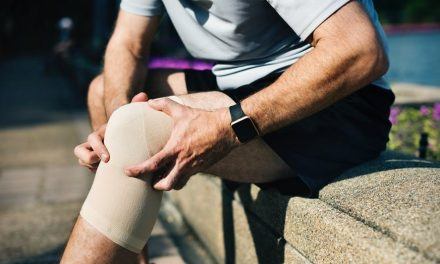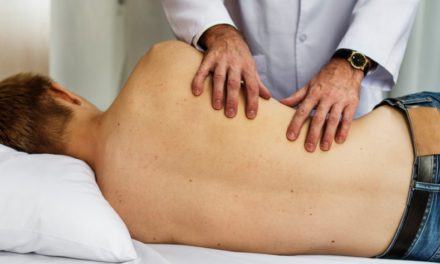In this article, we will be exploring when a muscle strain is serious and when to see a doctor for muscle strain.
You may have watched it on the TV – a soccer player falling down holding his hamstring. You too may have experienced the sharp pain in your muscles while moving, exercising or even walking briskly. The pain, muscle strain or pulled muscle, can happen to anybody, at any time. It can happen to a superstar as easily as it can happen to a common man. It can happen to you as well.
Let’s start digging by defining the muscle strain before addressing when to see a doctor for a muscle strain.
What is Muscle Strain?
Muscle strain is a phenomenon in which your muscle is torn or over-stretched. It can happen for two main reasons:
- either the muscle is stretched and contracted too strongly, or
- the muscle is stretched too far.
It causes due to fatigue, over-use or improper use of a muscle. It can happen from any movement and not only heavy movements.
Although it can happen to any muscle, most of the cases they generally occur to the muscle in lower back, neck, hamstring and shoulder.
Types of Muscle Strains
The muscle strains, like most of the other pain conditions, can be mild, moderate or severe.
Its severity is categorized by Grading system also by Grade I, II and III in the medical practice.
-
Strains with a Grade I
Grade I strain is a ‘mild form’. In this case, only a few muscles are stretched or torn.
-
Strains with a Grade II
Grade II strain is a ‘moderate form’ of strain.
Typically, the number of affected muscle fibers is more in this case. Compared to a Grade I strain, it is with more severe muscle pain and tenderness. You can also see mild swelling, maybe a bruise and noticeable loss of strength here.
-
Strains with a Grade III
Grade III muscle strains are serious injuries where the muscle is torn all the way through. These cause considerable pain, complete loss of muscle function, tenderness, swelling and discoloration.
Remember, there is another system of categorization where the muscle strains can be divided into two classes as ‘Acute’ and ‘Chronic’. Acute muscle pain is caused by sudden and unexpected injury whereas a chronic strain is caused by bad posture, a degenerative disease or long-term body abuse.

Tip: Did you know regardless of the location of your sprain, a Knee Pillow can help you to ease the pain?
What are the Symptoms of a Muscle Strain?
You will know when you have pulled a muscle. The main symptoms consist of sudden pain, soreness of the area. The movement of the area will be limited.
For severe Grade III muscle strain, there might be bruises or discoloration. It may happen for Grade II also sometimes. There will be swelling and there will be muscle spasms. You will also notice the stiffness and weakness of the muscle. The use of muscle will become decrease.
What Causes a Muscle Strain?
There is a notion that muscle strain happens only during rigorous physical activities, like running, physical sports, workout, etc.; but it is not true. Muscle strain can occur even when walking as well.
As noted earlier, it is correct to say that there are 2 types of muscle strain called ‘acute’ and ‘chronic’.
• Acute Muscle Strains
An acute muscle strain occurs when the muscle is torn suddenly. It can be due to poor flexibility and conditioning, not warming up properly before physical activity and fatigue. It can happen when you lose your footing, run, involve in activities like jumping, throwing, lifting something heavy.
It can also cause when you lift something in an awkward physical position.
It is also seen that the number of acute muscle strains occurs during winter or colder weather. This is because muscles are generally stiffer in lower temperature.
• Chronic Muscle Strains
Then, there are chronic muscle strains which happen due to repetitive movements. It happens over time and in a way, can be expected.
Chronic strains commonly happen due to poor posture, keeping your neck or back at an odd position for a long time such as working on the laptop. Some sports where specific body posture is required like rowing, tennis, baseball or golf, can cause chronic muscle strain as well.
Tip: Remember foot pain can be due to planter fasciitis too and if so, you are encouraged to use a night splint such as Futuro or Ossur.
Home Remedies for Muscle Strains
Most of the muscle strains, particularly Grade I and the majority of Grade II strains, can be treated in the home.
The Best Home Remedy for Muscle Strains is called RICE, which stands for:
Rest
Ice
Compress and
Elevate
Let’s explain each now.
• Rest
You need to rest your injured muscle. Take a temporary break from the activities that were causing pain. For a few days, avoid using the muscles. However, there is a catch. Too much rest can create a problem and make the muscles weak too. So, after two or three days try using affected muscles slowly with a plan to get it back to its full flexibility over time.
• Ice
Ice is a very effective and highly available pain reliever
and natural anti-inflammatory agent. Immediately after injury, you need to apply the ice. But, make sure not to use ice directly on the skin. It is better to use an ice pack or ice wrapped in a towel. You can use frozen vegetables as well.
You need to use ice for 20 mins per hours on the first day, and then for next a few days, ice needs to be used every four hours.
• Compress
Compress the area with an elastic bandage. It will reduce the swelling. However, you need to take care that the bandage should not be too tight as it can reduce the blood circulation.
• Elevation
And lastly, whenever possible, try to keep the strained muscle elevated from the level of your heart.

There are other home remedies also for muscle strain.
Use of nonsteroidal anti-inflammatory drugs (also known as NSAIDs) such as Ibuprofen can reduce the pain. They are normally Over The Counter (OTC) drugs so no prescription is needed.
You can apply heat to the muscle after three days. Keep your muscle active and do not rest for too long.
When to See a Doctor for Muscle Strain?
Home remedies are good with mild or moderate muscle strains, but for severe pain like Grade III, doctors’ help is a must. Sometimes when pain is too much OTC drugs do not help, then prescription medicines are needed. In extreme cases, surgery may be the only option of healing. But doctors’ advice is needed for all the severe cases.
Particularly if you hear or feel a pop (from tearing of the muscle) at the time of injury, when there is severe pain, swelling or discoloration in the injured area, etc. symptoms you should consult a doctor immediately.
For chronic pains, when the pain is so severe that you are unable to continue your daily routine or mild back pain that gets worse after every few days doctors help is needed.
In case the pain is present together with other symptoms like fever, chills, pain while urinating, tingling in a leg, the problem in controlling bowel or bladder movement you should take the injury very seriously. Regardless either one or several of the symptoms are present, it generally indicates a severe medical condition too so you should immediately consult a doctor.
Also, even in case of mild and moderate pains, if the muscle pain does not improve after two or three days, you better consult a medical professional.
Tip: You might need the support from an Air Cast for a severe leg sprain.
How to Prevent a Muscle Strain?
It is always said and as most of us know the prevention is better than cure. Saying so, you need to make sure you take a few steps to prevent the muscle stain from happening in the first place.
Firstly, try to stay in shape. A fit body with strong and healthy muscles is less likely to be injured. Also, the warm-up is extremely important before exercising.
You should stretch daily as well. It improves blood circulation and it can decrease the risk of injury too. You should remember stretching before and after doing any exercise is important.
Reducing body weight is unquestionably important in avoiding such injuries.
For prevention of chronic muscle strain, daily exercise is a must. Also, you should do a bit of stretching in between the long hours of work.

Tip: Is your sprain or pain in a joint? Then, worth trying a HeelBo Protector.
Conclusion
Muscle strains are unavoidable. All of us have faced it at least once.
By following the RICE principle and taking occasional pain-relieving medicine, the muscle strains can be managed effectively. If not, it is required to consult the doctor, especially under the circumstances noted in this article.
However, even with the risk of repeating, it has to be said that prevention is still the best cure. By exercising daily and stretching before and after exercise and during long work hours, the chances of a muscle strain can be reduced, if it can’t be prevented.









0 Comments